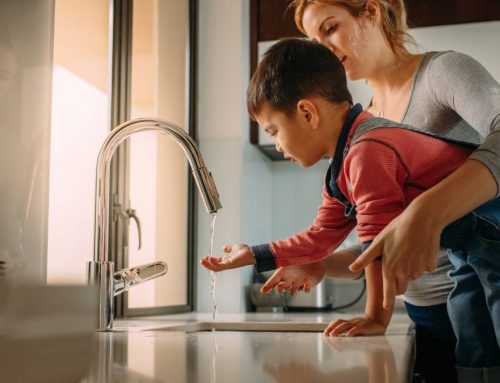
Your Reliable Source for Energy-Efficient Home Tips
Living in an energy-efficient home is all about finding your ideal sense of comfort, reducing monthly expenses and helping the environment. A few strategic changes around the house are all it takes to achieve your energy efficiency goals. We’ll be talking about some of the most common areas of energy waste in the average North American home and what you can do to fix them.
1. Poor Insulation
If your home’s attic, walls and floors lack sufficient insulation, you’re probably wasting energy, not to mention money. Effective insulation keeps heat in during the winter and out during the summer, so the HVAC system doesn’t have to run overtime.
- The fix: Consider more insulation in your attic, the easiest place to retrofit an existing home. There are several different types of insulation to work with, like fiberglass batts, blown-in cellulose and spray foam. Hiring a local professional is often worth it for the valuable insights and quality work.
2. Inefficient Appliances
Outdated refrigerators, dishwashers and washing machines consume higher power levels than modern appliances. Poor maintenance practices can make things even worse.
- The fix: Be mindful of energy usage with appliances. This means running full loads in the dishwasher, choosing cold water temperatures for clothes and loading the dryer properly. In fact, you should try to air-dry clothing when feasible. As for the fridge and freezer, remove debris from the coils for optimal performance. And when it’s time to get new appliances, look for high-efficiency models with ENERGY STAR® labels. They’re able to be energy efficient without sacrificing performance.
3. Incandescent Lighting
Traditional incandescent bulbs are well-known energy wasters. In fact, they lose a lot of their energy to heat, which isn’t just inefficient—it also makes your air conditioner work harder in the summer.
- The fix: Stick to using LED bulbs, which need much less power and have a much longer lifespan. Additionally, remember to switch off lighting when you leave a room. And for good measure, unplug any electronic devices when they’re not in use. For even more savings, explore smart lighting options to manage devices wherever you need to.
4. Take Advantage of Solar Energy
If you’re interested in going even greener, consider installing solar power. Panels alone can light your home during the day while an attached battery backup holds extra energy to use at night and on stormy days. While solar systems cost more up front, government incentives like rebates are offered to make it more affordable.
5. Water Heaters
Your worn-down water heater is a major power drain, especially when it’s set too high or is actually larger than necessary for your home. Water heaters also experience heat loss through uninsulated pipes, adding unnecessary costs to your monthly expenses.
- The fix: Consider investing in a tankless water heater, which only heats water when you need it. If this isn’t an option, wrap your water heater and pipes with insulation for better efficiency, adjust the thermostat to 120 degrees and try not to neglect water heater maintenance.
6. Old, Leaking Windows and Doors
Drafty windows and doors lose lots of indoor heat in the winter and bring in hot air during summer. In both cases, your HVAC system is pushed harder.
- The fix: If you can’t replace all the windows now, apply caulk and weather stripping around doors and windows to try and minimize these air leaks. If you’re prepared to invest in new windows, go for energy-efficient, low-emissivity (low-E) windows. These designs reduce unwanted heat transfer by forming a buffer zone between the inside and outside of your home.
7. Upgrading Your HVAC System
Heating and cooling represent over half of the energy use in most homes. If your HVAC system is old, it may have to run longer and might struggle to keep the temperature where you want it. Systems larger than you need are also a concern, as they are prone to short cycling, resulting in unstable temperatures, poor control over humidity levels and added strain on the system. Then, leaky ducts waste more energy, forcing your system to use more energy to meet comfort levels.
- The fix: Invest in a properly sized high-efficiency HVAC system and have the system’s ductwork tested for efficiency. Then, set up preventive maintenance to keep the system in better working condition for years to come. Consider adding a programmable thermostat. Installing one allows you to set temperatures more precisely based on your schedule, so you don’t waste energy on climate control when you’re not at home.

